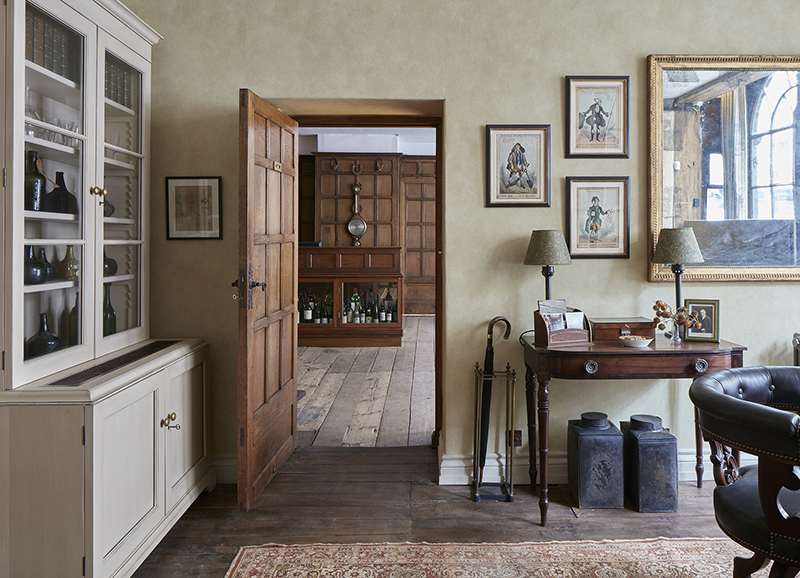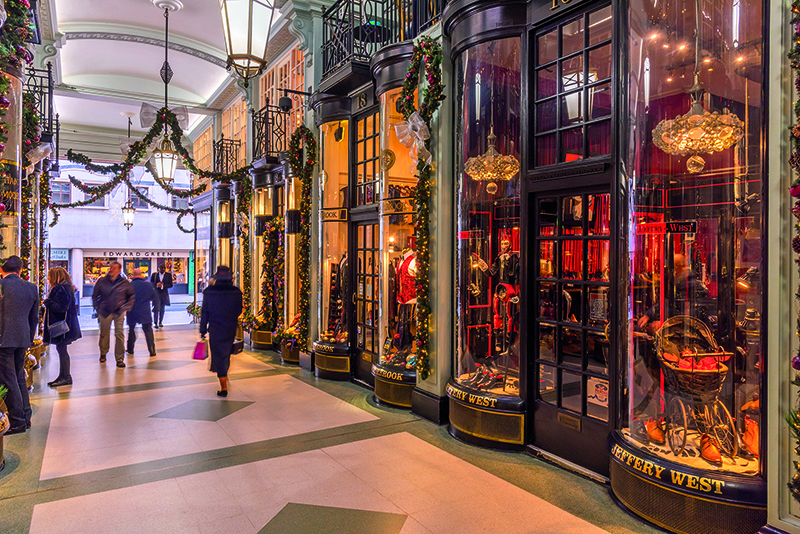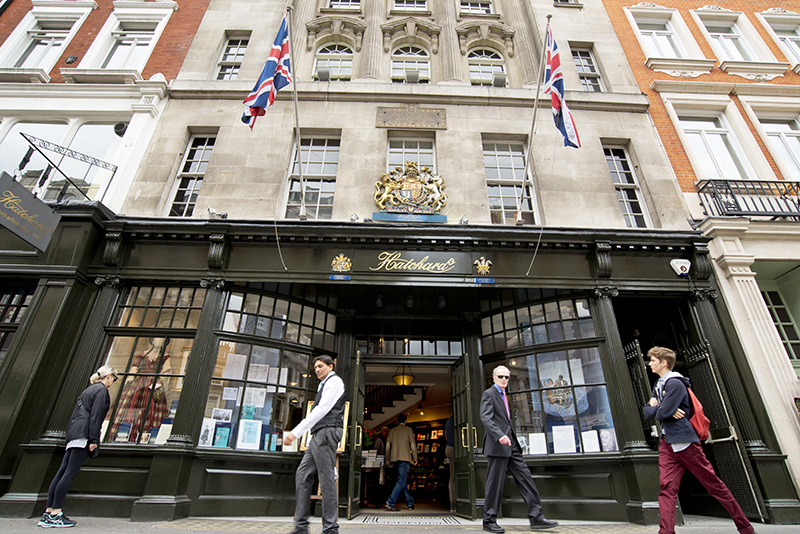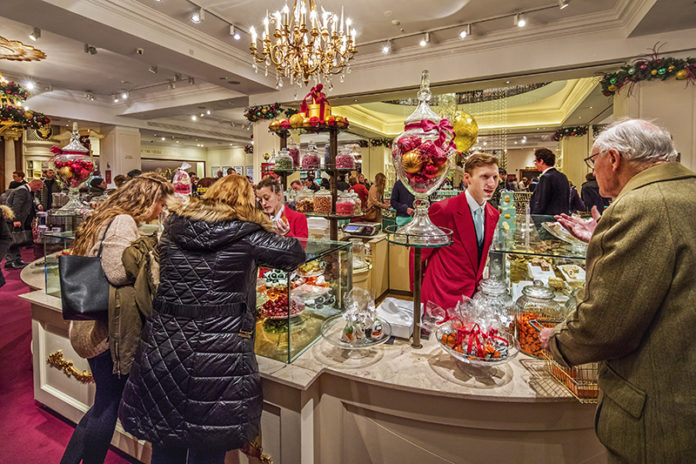Dating back to the 1660s, this bustling enclave is home to London’s oldest shops, selling everything from bowler hats to artisan cheeses
If you’re ever in London and find yourself in need of a walking cane, bowler hat or a case of claret, head to St James’s. This distinctive neighbourhood of central London, home to some of the city’s nest old shops, has a history dating back centuries.
In the early 1660s, one Henry Jermyn, 1st Earl of St Albans, was granted land from Charles II, with which he developed an aristocratic residential area. St James’s Square, lined with fine houses, was the centre of the district, with King Street, Charles II Street and Duke
of York Street leading off from it.
In the 19th century, St James’s became associated with gentlemen’s clubs – Brooks’s, Boodle’s and White’s being the best known for the landed gentry. This small neighbourhood had everything required for gentlemen to be gentlemen, from fine wine and fine art to tailored suits and cigars.
At 6 St James’s Street is Lock & Co, a hat shop since 1676 – the oldest in the world and still family-run. Robert Davis opened the shop and James Lock then became the apprentice to Robert’s son Charles. In 1765 the Locks moved to their current location and have attended to many men of note, including Lord Nelson – who called in before the Battle of Trafalgar to pay a bill for his signature bicorne hat with built-in eyeshade – and Arthur Wellesley, 1st Duke of Wellington, who ordered the plumed hat he wore at Waterloo. They even designed the tments for the Queen’s coronation crown. Lock also sold the first ever bowler hat, though they’re not known as bowlers here; shop staff insist that they are called ‘cokes’ after the Norfolk nobleman who first commissioned them for his gamekeepers.

Close by at No 3 is the wine emporium Berry Bros. & Rudd, an eighth-generation family rm in marvellous wood-panelled premises. Customers have included Lord Byron, the dandy Beau Brummell, George IV, King Louis-Philippe of France and Napoleon III. The company was set up by a woman called Bourne in 1698 opposite
St James’s Palace, which had just become the main residence of the monarch. In 1787 the first George Berry was born. Aged sixteen, he joined his grandfather’s business, which went from strength to strength. Over three centuries later, the family firm holds two Royal Warrants, indicating goods supplied to a member of the royal family, in this case the Queen and the Prince of Wales, the latter until recently living rather handily across the street.
Nearby at 89 Jermyn Street is Floris, named after Juan Famenias Floris. Originally hailing from Menorca, he first set up shop as a barber and then as a perfumer in 1730. Particularly of note are the beautiful original display cases that line the walls, which were purchased at the Great Exhibition of 1851.

A few steps away, at No 93, is Paxton & Whitfield, the well-known Suffolk cheesemonger and provisions merchant, which moved to these premises in 1797. Its traditional cheese and wine hampers are in high demand at Christmastime.
Jermyn Street is still the main destination for gentlemen to buy their shirts; chief among the shirt-makers is Turnbull & Asser at No 71, which was set up in 1885 by hosier Reginald Turnbull and salesman Ernest Asser.
During the First World War, the company developed a raincoat that doubled as a sleeping bag for the British army; these days it makes crisply tailored shirts for a rather distinguished list of customers, including the Prince of Wales.
An equally traditional fixture of the area is Swaine Adeney Brigg at No 7 Piccadilly Arcade, which has been trading since 1750 and offers a stylish, old-fashioned blend of craftsmanship, restoration and personalising of goods ranging from leather Papworth luggage to natty Herbert Johnson hats.

Round the corner at no. 187 Piccadilly is Hatchards. Britain’s oldest bookshop, it has been trading since 1797, when it was founded by the eponymous Mr Hatchard, whose portrait can still be seen on the staircase. It offers five floors of books and holds three Royal Warrants.
Of all the historic shops of St James’s, the best known is Fortnum & Mason at No 181 Piccadilly. In 1707, William Fortnum, a footman to Queen Anne, was given the job of re lling the royal candlelabra. Ingeniously, he came up with the idea of selling the part-used candles to the Queen’s ladies, making a modest profit.
After leaving St James’s Palace, Fortnum went into partnership with friend and landlord Hugh Mason selling ‘hartshorn, gableworm seed, saffron and dirty white candy’.
Fast forward three centuries and Fortnum & Mason is now the purveyor of luxury foodstuffs, from biscuits to preserves, not to mention the ultimate Christmas hampers. Every hour, a crowd gathers to await the emergence of the figures on the great clock above the front door, and to hear the Eton Boating Song being played.
Traditions live on in this little enclave of old-fashioned London shopping, and there’s clearly a reason why some things stand the test of time. What’s so appealing is the sense of a former world, of services and goods tailored to the gentleman at leisure: books and riding whips, saffron and cheese. Not to mention a good hat and some fine wine. And it always helps to have royalty popping across the street to give their seal of approval.






 © 2024
© 2024